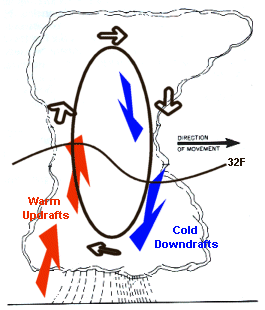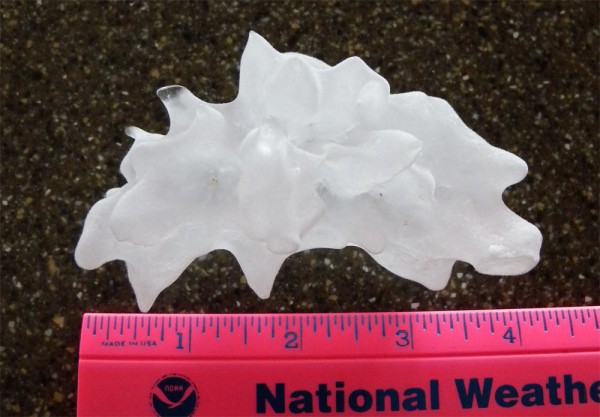For the Northern Hemisphere, March 1 marks the beginning of meteorological spring. In a way, you can look at spring as the transitional period of weather that goes from winter to summer.
During this transitional period, we typically see large swings in temperatures and an increase in warmer temperatures through time. When two air masses clash, thunderstorms can develop. Because of this, spring is typically the season for severe weather. For parts of the United States, there have been very impressive storms that have produced quite a handful of extraordinary hail cases. During the month of March 2012, Hawaii has broken a hailstone record and people of North Carolina and Virginia were literally shoveling hail off driveways and roads.

Hail is a form of precipitation that occurs when updrafts in thunderstorms carry raindrops upward into extremely cold areas of the atmosphere where they freeze into ice. There are currently two ideas of how hail is formed in a thunderstorm.
First of all, storms should contain strong updrafts to sustain and form hailstones. The main idea behind hail formation is that supercooled water droplets collide with hailstones while suspended in the air. These supercooled droplets freeze on contact with the other ice particles and enable the hailstone to grow in size. The updrafts in the storm enable the hailstone to stay suspended in the air. They collect more supercooled droplets. When the hailstone becomes too large and heavy for the updrafts of the storm to suspend it in the air, the hailstone falls to the ground.
Another idea behind hail formation is that supercooled water may accumulate on frozen particles near the backside of the storm as they are pushed forward across and above the updraft by the prevailing winds near the top of the storm. Eventually, the hailstones encounter downdrafts and fall to the ground.
Hail in the South
On Saturday, March 24, 2012, an upper level low pushed east into North Carolina and Virginia. There was enough instability and cold air aloft that the storms that formed produced a decent amount of hail. Hail accumulated to the depth of around six inches or 15.2 centimeters. Many areas reported hail around nickel to golf ball size. On this day, people turned in nearly 100 hail reports from South Carolina to Virginia as supercell thunderstorms developed across the area.

Hawaiian hailstones
In Hawaii, on the morning of March 9, 2012, a rare supercell thunderstorm developed over Windward Oahu . These storms produced large hail across Kaneohe and Kailua. Hail reports of two to three inches in diameter occurred in these areas as the supercell parked itself over these areas. A resident in the Aikahi Neighborhood reported a very large hailstone larger than three inches. After looking at the hailstone, the NWS reported that it was 4 1/4 inches long and 2 inches wide. It broke the record for largest hail stone ever reported in the state of Hawaii. The previous record was in 1950 with one inch in diameter!
Bottom line: For the month of March 2012, some pretty incredible hail made the news. Hawaii broke a state record with a hailstone 4 1/4 inches long and 2 inches wide. Across North Carolina and Virginia, storms on March 24, 2012 produced an accumulation of hail across the area. Some places actually had to shovel the snow off their driveways and the roads. As we move into the heart of the severe weather season, we will likely see more reports of large hail as storms are more powerful and can contain stronger updrafts. Hail can be very damaging, especially for vehicles and roofs. Let’s hope for a less active severe weather season for spring 2012.











